Weeding is a constant task in every garden. Having unwanted plants sprout up is actually a sign of a healthy soil ecosystem. You want your garden teeming with life, and often the very inventions used to forever abolish weeds have a sterilizing and damaging effect on soil health and, ultimately, the health of your landscape.
Hand-pulling is, in the end, the best medicine for you and your garden. It brings you much closer to your landscape and allows you to notice things that you normally wouldn’t.
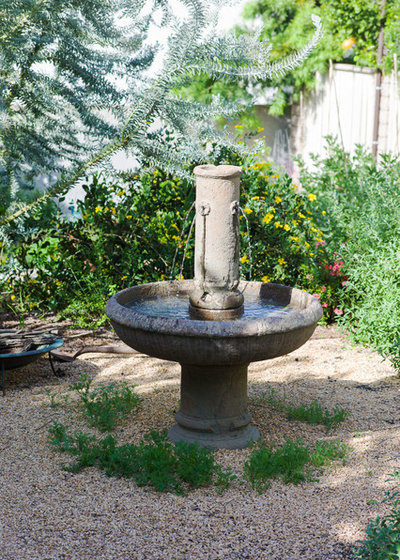
Theodore Payne Foundation
‘Moonglow’ California poppies (Eschscholzia californica ‘Moonglow’) were seeded to appear underneath the fountain. The homeowners didn’t weed until the distinctive poppy foliage was more clearly developed.1. Wait until weeds have developed before removing them. All kinds of things will sprout up in the garden after a good rain or two. If you have seeded an area with wildflowers, you’ll want to hold off on weeding until the plants develop a bit and you can more easily distinguish weed from wildflower. Often, wildflower seedlings that have just sprouted will look different from their more mature form, so a little patience goes a long way.
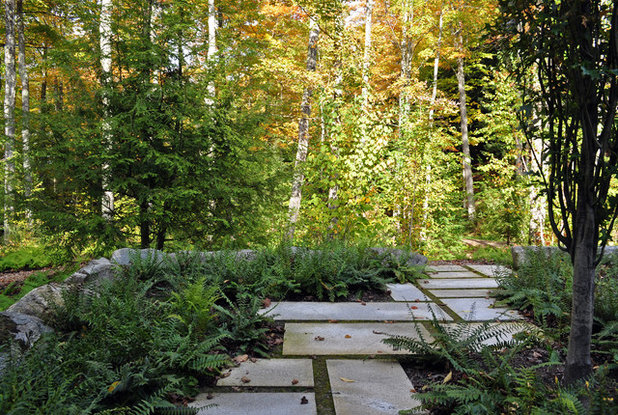
Shepard Butler Landscape Architecture
2. But don’t wait too long. It’s best to try to get weeds while they’re young and easy to pull, and before they’ve gone to seed. If you’re successful, you’ll notice over time that there are fewer weeds to pull. This is because you’ve reduced the weed seed bank in your soil.
If you’ve pulled the weeds before they developed seed heads, you can put them straight in the compost bin, unless they’re from a plant that spreads by rhizomes, such as Bermuda grass. In that case, throw the weeds in the trash to keep the plant from spreading.
Tip: If you are friends with other gardeners in your neighborhood, offer to host a weeding cocktail hour in your garden. Be sure to return the favor in their gardens. Socializing and weeding make a great pair: You can connect with friends while being productive, and everyone feels great after spending time outside. Be sure to have a few extra kneeling pads on hand, so folks are comfortable.
5 Ways to Naturally Win the Weed War
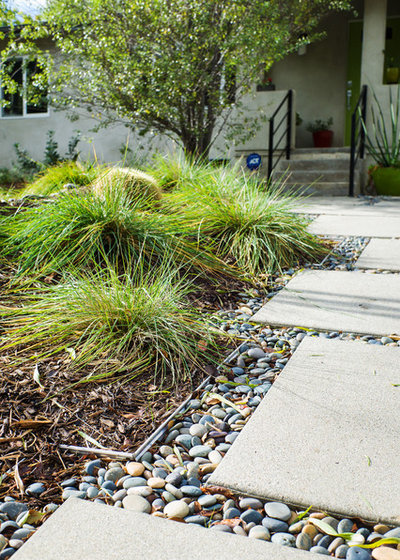
Theodore Payne Foundation
A fine shredded wood mulch around California native succulents and grasses helps suppress weeds, and creates a tidy and unified look.
3. Use mulch to discourage weeds. A 2-inch-thick layer of mulch around your plants provides a powerful advantage in the weed battle. Two inches is pretty thick, and this helps minimize the amount of sunlight that reaches the weed seeds in your soil, which prevents germination.
Although it won’t prevent all weeds from popping up, mulch greatly reduces the percentage of weeds in your landscape. Mulch regulates soil temperature and helps retain soil moisture, making your watering go further. As woody mulches break down, they replenish organic matter in the soil, which is often badly needed in gardens that were formerly lawns. Mulches can also provide a unifying and tidy look in a garden.
Tip: Never pile mulch against the woody base or crown of plants, which can create the ideal conditions for rot.
How to Pick a Mulch — and Why Your Soil Wants It
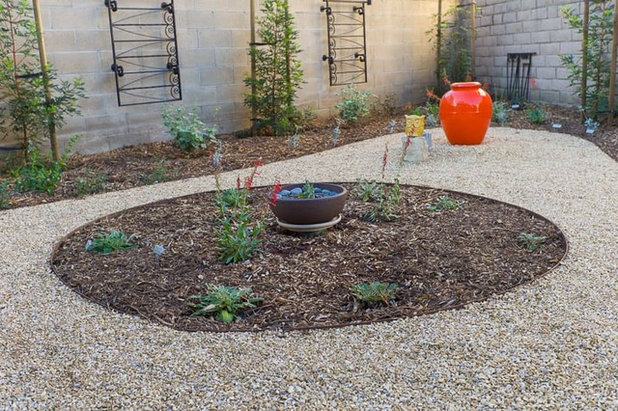
Oakley Gardens
This newly planted garden was mulched immediately after planting to help suppress weeds as well as to maintain the soil moisture and coolness baby plants need to survive a hot spring and summer season.4. Weed before you mulch. After planting a new garden, weed the area carefully before adding 2 inches of mulch. Continue to weed monthly after that. An annual application of 1 to 2 inches of mulch each summer should be part of every gardener’s long-term maintenance strategy.
You can buy bags of high-quality mulch from many gardening supply stores, or you can look into having larger quantities delivered by truck, which requires more planning. The truck will dump the pile, and you’ll want to have help available to immediately get the pile off the street or driveway and distributed into your garden.
Tip: If you buy mulch, be sure it has been hot-composted, where the compost pile reaches temperatures high enough to kill weed seeds, so that you don’t inadvertently bring more weeds into your garden.
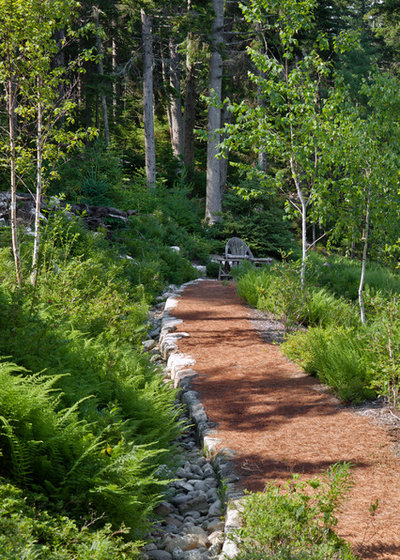
Matthew Cunningham Landscape Design LLC
5. Use on-site sources for mulch if you can. The pine needles used for this lovely path also could work as a plant mulch. Oak leaf litter makes another nourishing mulch that plants will appreciate.





